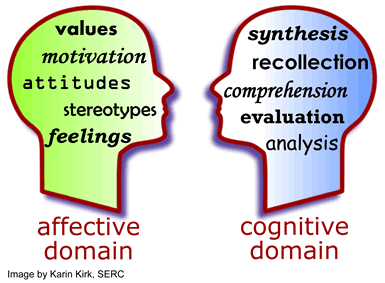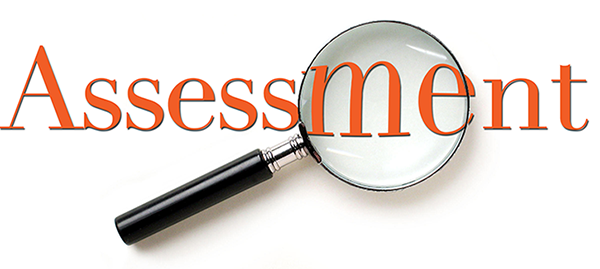 |
| http://serc.carleton.edu/NAGTWorkshops/affective/index.html |
The affective domain of learning
involves a student’s attitudes, interests, and values (Hall, 2011). Without a
positive affective domain, a student will likely do poorly in a class, even if he
or she has the capability and skills to do well. Similar to the growth and
fixed mindset that we learned about, a certain affect could hold students back.
Hall (2011) demonstrates this with an example: a student that have the ability
to write and comprehend reading may do poorly just because they have a negative
affect.
Even though having a positive
affect towards learning would really help a student learn, teachers often
neglect affective assessments (Hall, 2011). From my experience, most teachers focus
on improving students’ cognition, but very few address students’ affect. While
trying to improve assignments and the structure of homework assignments will
certainly help a teacher become a more effective instructor, it does not
address how open the students will be to learn.
I plan to use affective assessments
in my classroom to help both my students and me improve. I will use
self-reflective essays and assignments to help students help themselves. For
example, I can ask my students to write an essay about why they don’t want to
learn about biology. Through answering this question, students may learn about
what’s holding them back from learning. Self-reflective rubrics are also a
valuable self-improvement tool; students compare their assignments and projects
to the rubrics to determine how they can improve their work (Andrade,
2007/2008). Through this action, students will develop independence towards
creating better work.
Unlike self-reflective essays and
rubrics, the questionnaire and survey type of assessments will help me improve
more than my students. Questionnaires will allow me to quickly see how my class
as a whole feels towards learning certain subjects (Popham, 2009); I could then
use this data to adjust my lesson plans. Surveys, similar to questionnaires,
will help me understand how my students feel. Unlike questionnaires, surveys
will be more in depth and less anonymous (Gibson & Chase, 2002). I could
use the data from surveys to help me address each student personally.
References
Andrade, H.
(2007/2008, December/January). Self-assessment through rubrcs. Educational Leadership, 65(4), 60-62.
Hall, R.A.
(2011). Affective assessment: The missing piece of the educational reform
puzzle. Delta Kappa Gamma Bulletin:
International Journal for Professional Educators, 77(2), 7.
Gibson, H.L.,
& Chase, C. (2002). Longitudinal impact of inquiry-based science program on
middle school students’ attitudes towards science. Science Education, 86(5), 693-705.
Popham, W.J.
(2009). Assessing Student Affect. Educational
Leadership, 66(8), 85-86.


